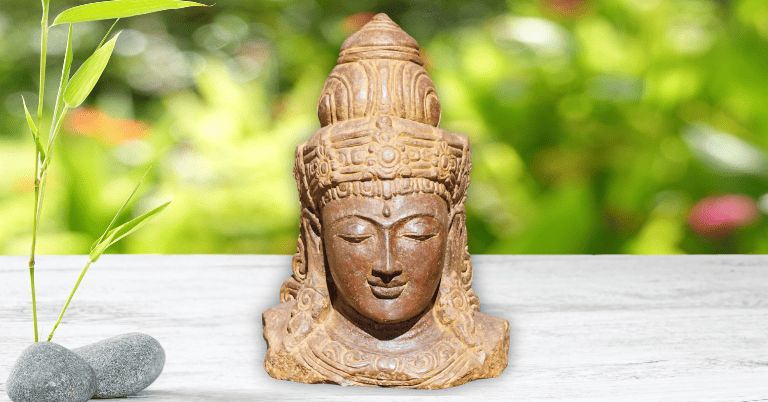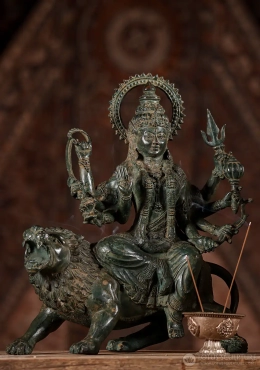In century-old Buddhist culture, Bodhisattva is often considered as an ultimate symbol for both wisdom and compassion who intentionally chooses to remain in the never-ending cycle of rebirth in order to help others achieve enlightenment over the period of time. Moreover, premium Bodhisattva statues are usually served as an immortal reminder of this sacred vow. Furthermore, regardless of whether they are placed in a temple, home, or even garden, these statues can effectively add a sense of spirituality, artistic beauty, as well as cultural heritage to your space.
Here in this article, we’ll thoroughly discuss the meaning as well as the significance of Bodhisattva statues in order to help you understand how these statues can effectively make an ultimate difference in the overall vibe of your home.
Understanding the True Meaning of Bodhisattva Statues
In Sanskrit, Bodhisattva, meaning “enlightenment being,” is a person who’s going to become a buddha but ultimately chooses to slow down their own nirvana stage in order to guide others to this serene path. Moreover, Bodhisattva chooses to remain in this whole process out of his unwavering compassion towards others well-being, unlike some other Buddhas who already surpassed their samsara cycle.
These statues are usually portrayed in various elegant postures, embraced with timeless crowns as well as jewelry to effortlessly indicate their overall royal and divine status in Mahayana Buddhism. Furthermore, each statue signifies eternal compassion, mindfulness, patience, as well as kindness to help you achieve spiritual awakening over time.
Kwan Yin Statues—Ultimate Embodiment of Compassion

Kwan Yin, the most cherished Bodhisattva figure, is also well-known as Guanyin or the divine Goddess of Mercy. Moreover, her statues are very popular among the East Asian traditions due to their serene energy as well as timeless aesthetics. These Kwan Yin statues effortlessly represent unconditional love and eternal compassion for others’ well-being.
Nevertheless, the goddess also embodies ultimate healing energies when portrayed with a relaxed, motherly expression while holding a vase or just a lotus. Furthermore, in various representations, the goddess usually stands on top of a dragon or even rides waves, ultimately signifying her powers to effectively overcome both painful sufferings as well as upcoming dangers over time.
You should always place a premium Guan Yin Bodhisattva statue into your living room in case you desire to maximize the overall serene and peaceful vibes of your home. However, you can also place these statues near your entryways, meditation rooms, or even gardens to build an ultimate connection with the divine energy and achieve your long-lasting inner balance.
Devi Tara Statue—Visual Representation of Feminine Enlightenment

Devi Tara statues usually hold a very special place in Buddhist culture, as they are responsible for representing one of the most dominant female Bodhisattva figures in Vajrayana Buddhism. Moreover, Devi Tara, specifically in both her green and white forms, is often considered as an ultimate protector as well as a guide through all the emotional and spiritual obstacles that a person usually faces in his/her lifetime.
Devi Tara statues are often illustrated in a seated position with one leg extended to signify readiness to act regardless of the situation. Furthermore, in this position, her right hand is in the giving gesture, whereas the left one is holding a lotus to symbolize the importance of eternal purity, calmness, and spiritual awakening.
The overall presence of Devi Tara garden fountain sculptures also provides divine protection as well as an ultimate empowerment of feminine energy when placed in gardens or spiritual centers. Nevertheless, you’ll be surprised to know that she is also depicted as an untamed guardian of the soul and a faster responder to her devotee’s prayers.
Avalokiteshvara Statues—Eternal Guardian of All Beings

In Tibetan culture, Avalokiteshvara is also well-known as Chenrezig, one of the most celebrated Bodhisattvas. Moreover, Avalokiteshvara usually means “the ultimate lord of unwavering compassion.” These statues are also considered as the male counterpart to the legendary Kwan Yin in various cultures that represent the endless compassion of all Buddhas.
Avalokiteshvara Bodhisattva statues are crafted with intricate detail images in various versions, such as 1000 arms and 11 heads, each signifying his ultimate ability to hear the cries of every being as well as guide them towards the divine serenity at the same time. Furthermore, these Avalokiteshvara statues can be placed on the altars or near your meditation rooms in case you want to achieve your overall inner peace, healing, as well as emotional clarity goals over time.
What are the Symbolism and Aesthetic Aspects in Bodhisattva Sculptures?
Divine Bodhisattva statues are not only a mere representation of spiritual figures but also captivating storytelling masterpieces. Moreover, every single posture, facial expression, as well as accessory holds specific symbolic values.
- Mudras or Hand Gestures: Every mudra or hand gesture in Bodhisattvas delivers a certain spiritual message, such as the Abhaya mudra for protection, the Varada mudra for compassion, and the Dhyana mudra for meditation.
- Lotus Bases: Used to represent ultimate purity and detachment. A lot of statues usually either stand or sit on the top of lotus flowers to signify the importance of eternal enlightenment rising above the never-ending chaos of the world.
- Facial Expressions: Calm and serene facial expressions help in reflecting the overall inner peace and unwavering compassion of the Bodhisattvas.
- Intricate Details: Timeless robes, crowns, as well as jewels signify the divine royalty of spiritual Bodhisattvas.
Effective Ways to Choose and Place Spiritual Bodhisattva Statues
Your overall intentions as well as spiritual goals mean a lot while choosing the Bodhisattva statues, as they are not just for random decor purposes but to embrace a specific divine energy into your precious space. Therefore, here are some of the best tips that you may also consider while choosing your Bodhisattva statue:
- You must choose a premium wooden or Kwan Yin white marble statue and place them near the windows or meditation rooms to achieve compassion and healing.
- You must look for Devi Tara lava stone statues in case you want wisdom and action for your workspace as well as personal altars.
- You can place high-quality brass Avalokiteshvara statues in your living rooms to get overall spiritual support and serenity in the long run.
Furthermore, you should always ensure that these statues always face a well-maintained and peaceful direction, specifically the east or northeast, to maximize the overall spiritual vibes in your home. You should also keep in mind to always place them on a raised platform or altar instead of placing them directly on the floor.
Final Thoughts
Bodhisattva statues in the USA hold much more significance than luxurious artifacts, as they are an ultimate embodiment of unwavering compassion, mindfulness, as well as spiritual purposes. Thus, regardless of whether you want the maternal embrace of Kwan Yin-—the Bodhisattva of compassion, the endless enlightenment of Devi Tara, or just the eternal love of Avalokiteshvara, every statue carries its own essence of divine energy. Nevertheless, if you’re someone who wants to uncover your spiritual growth or just maximize your surroundings with the ultimate serenity, considering these high-quality statues your go-to way to build an eternal connection with the divine.
Do you also want to embrace these ultimate symbols of compassion and enlightenment? Then, don’t wait any longer and contact Lotus Sculpture today to explore our collection of hand-carved Bodhisattva statues especially designed to reflect the purest essence of both spirituality and artistic excellence. Visit us today to achieve the perfect balance of peace and serenity for your space!





